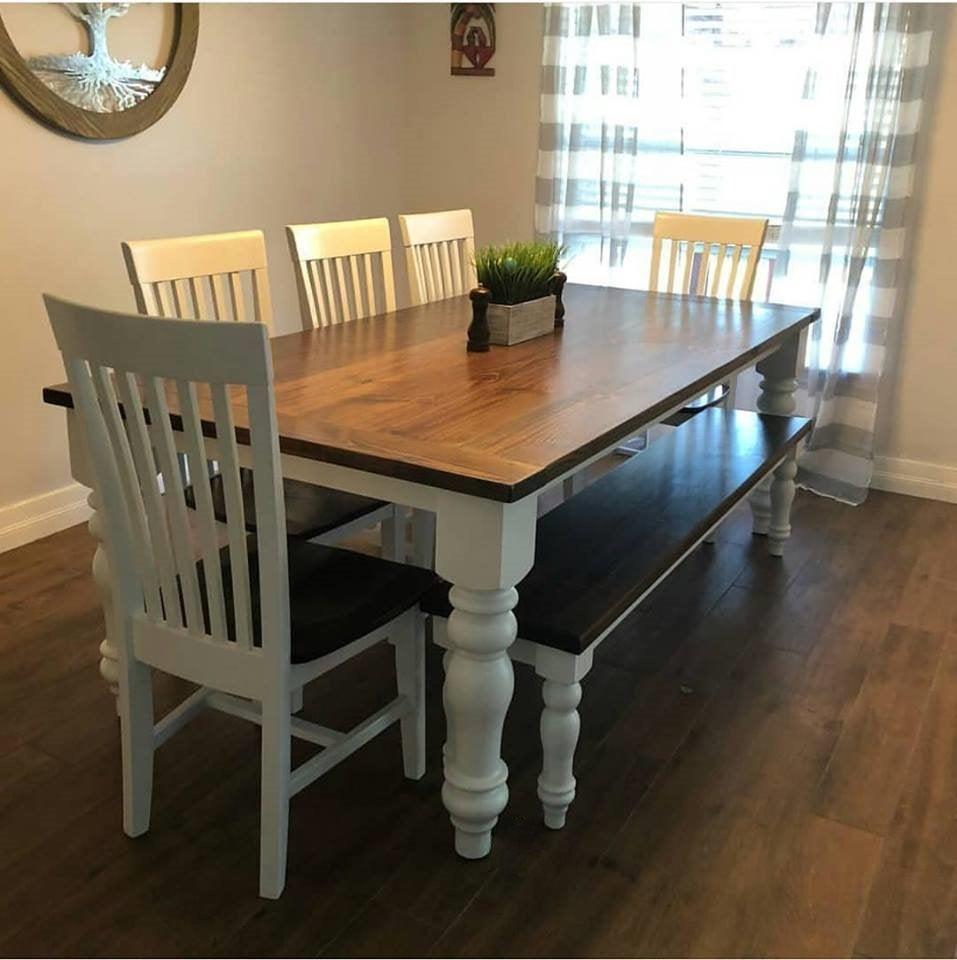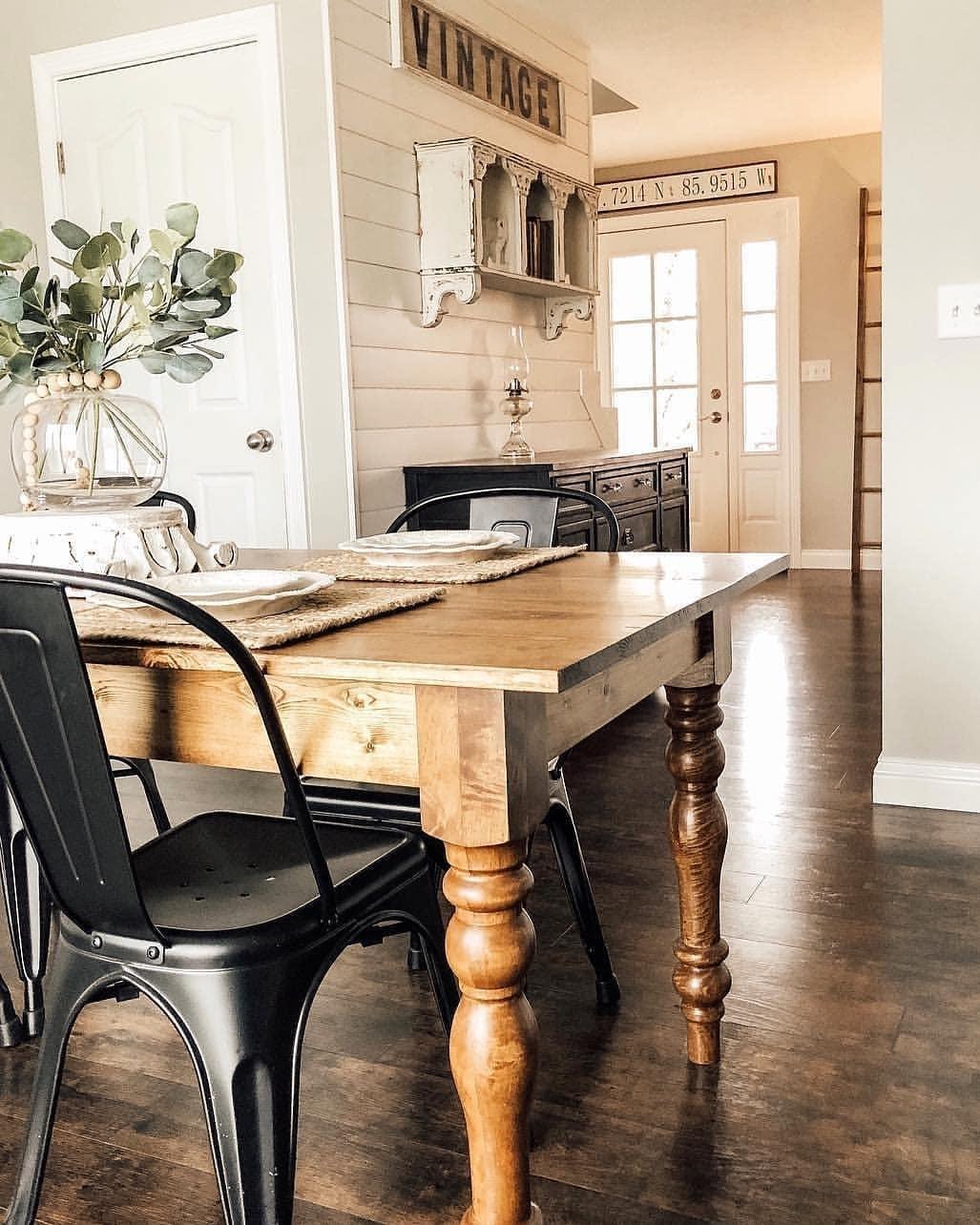Top Patterns in Dining Room Table Legs to Raise Your Dining Area
Top Patterns in Dining Room Table Legs to Raise Your Dining Area
Blog Article
Picking the Perfect Table: What Styles Work Best for Your Home?
Picking the optimal dining table for your home can be a nuanced procedure that balances appearances and performance. Whether your space leans in the direction of traditional sophistication, modern minimalism, rustic beauty, or industrial posh, the range of designs available can satisfy diverse preferences. Each design offers special advantages and difficulties that can either boost or disrupt your eating location's harmony. Recognizing how different products, shapes, and sizes connect with your existing decor is vital. To navigate these options properly and find a table that really enhances your home, consider the complying with elements carefully.
Examining Your Area
Evaluating the measurements and layout of your dining area is a crucial initial step in picking the ideal table. Begin by gauging the length and width of the area, representing entrances, windows, and other architectural functions that might affect table positioning. This guarantees that your table not only fits however likewise enables comfy activity around it.
Think about the variety of people you commonly delight. A table should fit your household's daily demands while offering sufficient versatility for periodic visitors. Generally of thumb, allocate a minimum of 24 inches of table size each to make certain a comfortable eating experience.
It's also necessary to preserve appropriate clearance around the table. Ideally, there need to go to least 36 inches in between the table side and wall surfaces or other furniture, making it possible for very easy gain access to and motion. For areas where chairs with arms or additional storage space systems like buffets are included, raising this clearance to 48 inches is suggested.
Illumination and environment play considerable functions. Make sure that your eating table lines up with existing illumination fixtures or prepare for sufficient illumination solutions. This detailed spatial evaluation assurances that your dining table not just fits physically but also harmonizes with your space's general performance and visual.
Popular Table Styles

Traditional table usually feature elaborate details, bent legs, and rich wood coatings, evoking a sense of timeless elegance. They are excellent for homes with traditional decor or those seeking to include a touch of refinement to their dining location.
Modern eating tables focus on simpleness and tidy lines, frequently including products like glass and metal. These tables are suitable for modern spaces, offering a sleek and uncluttered look that enhances minimal layout viewpoints.
Rustic table, on the other hand, stress natural products and a handcrafted appearance - dining room table legs. They commonly feature reclaimed timber and a distressed finish, developing a warm and welcoming ambience. These tables work well in farmhouse-style homes or those looking for a relaxing, organic feeling
Industrial eating tables integrate raw materials such as steel and timber, usually showcasing a practical aesthetic. This design is well-suited for loft spaces or metropolitan rooms, including a touch of tough beauty and longevity to the dining experience.
Each design uses unique advantages, making it important to select one that straightens with your home's overall my latest blog post design and your individual preferences.
Product Choices
When selecting a table, the selection of material plays a crucial role in identifying both the table's aesthetic appeals and performance. Wood, metal, glass, and composite products each offer special advantages and obstacles, making it important to line up the material with your home's style and way of life demands.
Wood is a timeless and functional choice, available in selections such as oak, walnut, and mahogany. Recognized for its longevity and heat, wood matches both conventional and modern insides. Nonetheless, it requires regular maintenance to avoid scrapes and warping.
Metal tables, often crafted from stainless-steel, aluminum, or functioned iron, are applauded for their contemporary allure and robustness. They are specifically suited for commercial or minimal settings but can be prone to dents and might really feel cool to the touch.
Glass table bring an air of style and openness, perfect for smaller spaces as they create an illusion of even more room. While easy to clean, glass can be susceptible to spots and calls for careful taking care of to stay clear of chips and fractures.
Composite products, such as MDF and plywood, deal affordable and customizable remedies, though they may lack the durability of natural materials. Selecting the ideal material ensures your table is both a functional asset and an aesthetic pleasure.
Sizes And Shape Considerations
After establishing the ideal product for your dining table, the next consideration is selecting the best form and dimension to fit your space. The shape of the table dramatically affects the space's visual and performance. Rectangular tables, one of the most typical shape, are ideal for bigger areas and can accommodate a greater number of visitors. They also enable a much more formal eating experience. On the other hand, rounded tables cultivate a sense of affection and are exceptional for smaller dining areas, encouraging discussion by removing corners and making every person feel similarly included.
Size is just as essential and must be determined by both the room's measurements and the variety of individuals you plan to seat consistently. As a guideline of thumb, designate a minimum of 24 inches of table width each to make sure comfy eating. Additionally, think about the table's clearance room: there need to be at least 36 inches between the table edge and the wall surfaces or various other furnishings. This ensures that diners can move quickly without really feeling confined. Expanding tables supply flexibility if you frequently host larger events, supplying extra seats when required without inhabiting added room daily. Picking the appropriate sizes and shape makes certain both practicality and aesthetic consistency in your eating location.
Matching Your Design
Choosing a table that integrates with your existing decoration is critical in developing a natural and inviting room. Begin by evaluating your current interior decoration style, whether it be modern, conventional, rustic, or diverse. The table should enhance the overall visual, he has a good point not take on it. A smooth, minimal table with clean lines is excellent for a contemporary home, while a vintage, luxuriant table suits an extra traditional setup.
If your decoration includes cozy tones and all-natural products, take into consideration a wood table to enhance the organic feel. Conversely, a glass or metal table may be much more proper in an area controlled by trendy shades and commercial components.
Texture plays an important function. A rough-hewn, recovered wood table can add character to a rustic room, while a polished marble surface area can boost a luxurious eating location. Take into consideration the range and percentage of the table in connection to the content room size and existing furnishings. A well-matched table not only enhances visual allure yet additionally enhances the general dining experience.

Conclusion
Choosing the suitable table necessitates cautious factor to consider of room, design, products, shape, and size (dining room table legs). Conventional tables enhance traditional interiors with abundant timber surfaces, while modern-day tables fit modern settings with glass and steel. Rustic styles present heat using all-natural products, and commercial designs enhance urban environments with raw elements. Harmonizing the dining table with existing decoration makes sure both capability and aesthetic allure, adding to a natural and visually pleasing eating area.
Report this page